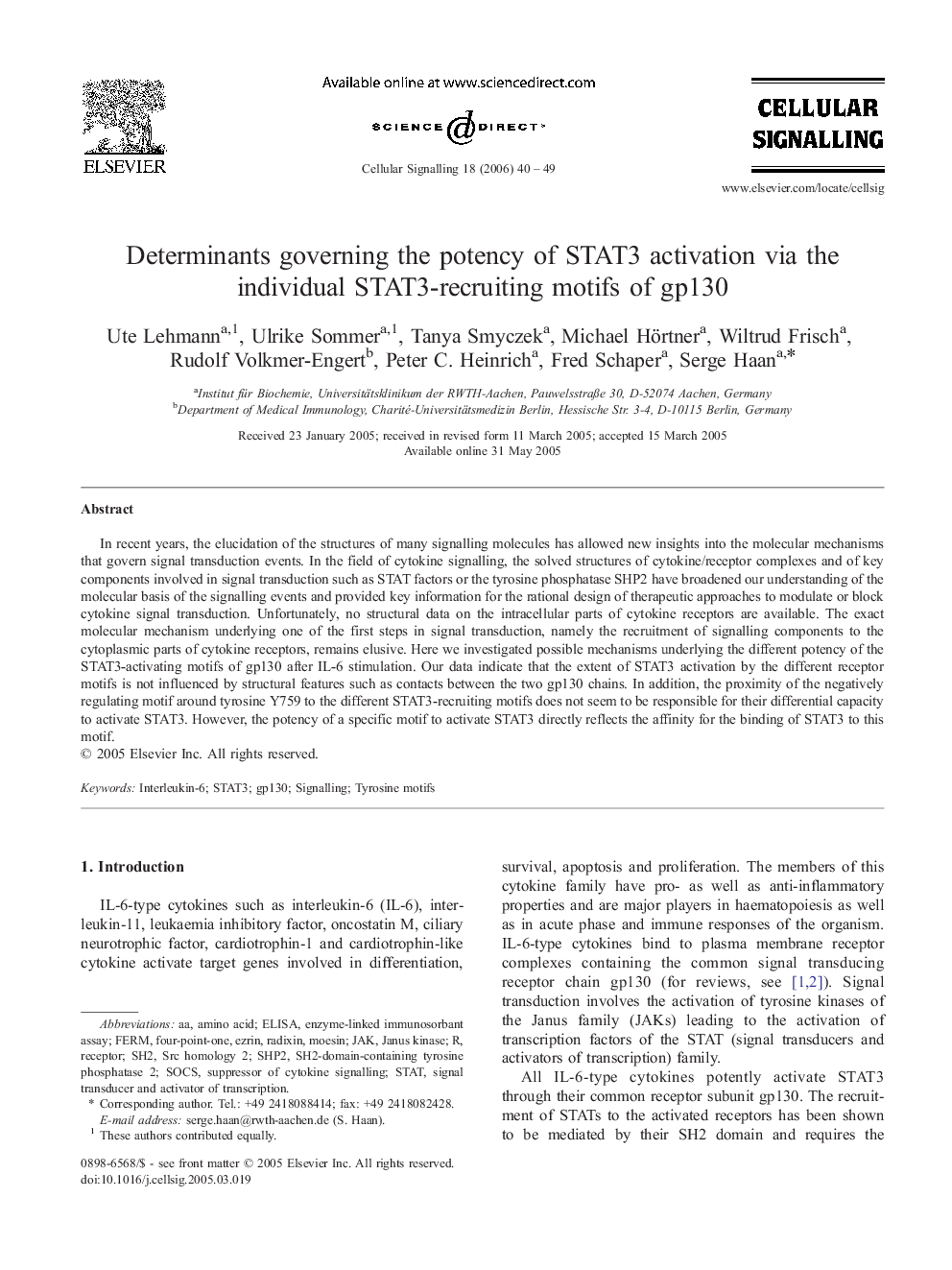| Article ID | Journal | Published Year | Pages | File Type |
|---|---|---|---|---|
| 1964988 | Cellular Signalling | 2006 | 10 Pages |
In recent years, the elucidation of the structures of many signalling molecules has allowed new insights into the molecular mechanisms that govern signal transduction events. In the field of cytokine signalling, the solved structures of cytokine/receptor complexes and of key components involved in signal transduction such as STAT factors or the tyrosine phosphatase SHP2 have broadened our understanding of the molecular basis of the signalling events and provided key information for the rational design of therapeutic approaches to modulate or block cytokine signal transduction. Unfortunately, no structural data on the intracellular parts of cytokine receptors are available. The exact molecular mechanism underlying one of the first steps in signal transduction, namely the recruitment of signalling components to the cytoplasmic parts of cytokine receptors, remains elusive. Here we investigated possible mechanisms underlying the different potency of the STAT3-activating motifs of gp130 after IL-6 stimulation. Our data indicate that the extent of STAT3 activation by the different receptor motifs is not influenced by structural features such as contacts between the two gp130 chains. In addition, the proximity of the negatively regulating motif around tyrosine Y759 to the different STAT3-recruiting motifs does not seem to be responsible for their differential capacity to activate STAT3. However, the potency of a specific motif to activate STAT3 directly reflects the affinity for the binding of STAT3 to this motif.
